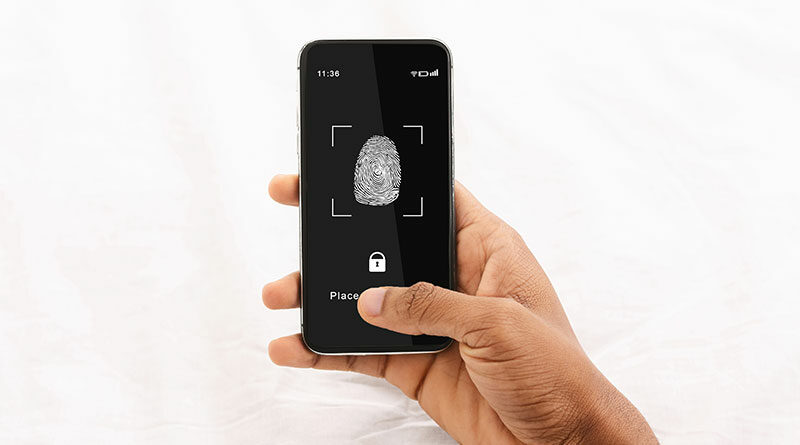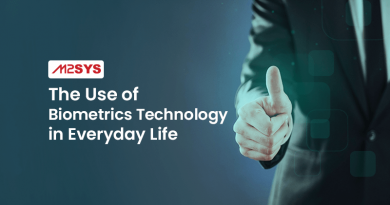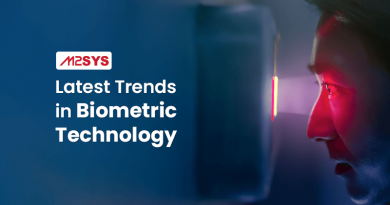5 Recent Trends in Biometric Technology
With the pace of rapid innovation in today’s biometric technology field, new uses are appearing to make the process of authentication more convenient and secure. These innovative and useful processes of human identification are increasing in frequency with every year. As these uses are increasing, they are also creating some trends and reshaping the way we identify humans.
Of all the trends we see in the field of biometric technology, most are focused on finding a better and more efficient way of authenticating a person based on “Who they are.” Of course, there are still the traditional ways of identifying a person including personal identification numbers (PINs), ID cards, and passwords but these methods identify a person based on “what they have” or “what they know.” None of them identifies a person with the most important factor, which is “Who they are.” As biometric traits are personal and unique, this is perhaps the most accurate way of identifying a person.
All the trends we are going to discuss today indicate how biometric technology is evolving to make authentication more convenient and secured:
1. Mobile Biometric Technology
Both governments and the private industry are turning to mobile biometrics to speed up processing of human identification. Mobile biometrics simply means achieving individual biometric identification on a mobile device with the portability to be easily moved or shifted from one place to another. Biometric functionality can be achieved on a mobile device either through its built in biometric sensors or by attaching portable biometric hardware to it via a USB cable or through a Wi-Fi connection.

This trend is triggered by the fact that, biometric human identification can’t always be performed in a controlled office environment. At times biometric identification might be required to go where people go, perhaps in public venues. Under these situations mobile biometrics can be effective and speed up the identification process. One great example of this can be the Iraqi automated border control system. Currently they have more than 100 mobile biometric checkpoints where they are over one million registrants are currently checked every day with an ABIS biometric identification system to protect their borders from insurgents and terrorists.
2. Multimodal Biometric Authentication Systems
The next trend in biometrics is the use of multiple biometric authentication systems for human identification. Multimodal biometric authentication systems take input from a single or multiple biometric devices for measurement of two or more different biometric characteristics to ensure authentication accuracy.
From our experience of working in different verticals, we have seen that having a single form of biometrics for authentication is no longer an effective option for many companies.
For example, Bahrain based Mass Contracting Co. WLL is a Manufacturing and construction company. They wanted to take attendance of their construction workers and chose to deploy our Bio-Plugin™ multimodal solution with both a fingerprint and finger vein modality. They made that decision after considering the nature of work performed by their construction workers. Construction workers are expected to have dry, cut or damaged fingers. Having only a unimodal fingerprint based solution was not ideal to capture the majority of individual biometric credentials.
A unimodal biometric system captures and matches only one biometric trait resulting in an absence of sustainable ways to solve limitations like noisy data, intra-class variations, non-universality, and spoof attacks. Multimodal biometric authentication systems are expected to be more reliable against these issues due to the presence of multiple, independent biometric traits. Multimodal biometric authentication systems are expected to be used more in the future due to their effectiveness in providing more accurate results and stronger security.
Multimodal biometrics expected to be used more because more accurate, stronger security. Click To Tweet3. Cloud Based Biometric Solutions
This trend is mainly driven by mobile biometric technology. When you are thinking mobile biometric technology, pairing that mobile biometric device with a cloud based biometric solution can speed up the identification process even more. Instead of saving the biometric data locally, sending it to the cloud is a safer solution.
In addition, when government and enterprises are calculating the overhead cost they have to bear for maintaining a physical server, moving to the cloud seems like a wise choice. Another fact behind the rising trend of using cloud based biometric solutions is the scalability of the cloud. Cloud computing allows your business to easily upscale or downscale their IT requirements as required. For example, they can quickly increase their existing resources to accommodate increased business needs or changes. This allows them to accommodate their business growth without expensive changes to existing IT systems.
Fact: Rising trend of cloud based biometric solutions due to scalability. Click To Tweet4. Vertical Specialized Biometric Solutions
Having a vertical specialized biometric solution for identity management is becoming a popular choice for many industries. These kinds of solutions are designed to meet the unique demand of their respective industries. They are also customized by keeping in mind the local and international industrial laws and standards.
For instance if you look at our CertisID™ vertical specialized biometric solution for the financial services industry, it is designed to provide security, and reduce fraud and waste providing a complete audit trail for both customer and employee activity. For the healthcare industry, we have our RightPatient® smart health platform that facilitates a higher accuracy level for patient identification and unifies big data and clinical knowledge in healthcare in an unprecedented way to drive personalized health, decision support, and predictive analytics.
When seeking biometric identification management solutions, businesses are very conscious about their unique requirements and are opting to deploy a customized solution designed specifically for their verticals. These solutions not only provide higher efficiency and control, at times they provide a competitive advantage over peers who are not yet adopting them.
5. Biometric Single Sign on (SSO)
Perhaps one of the most popular debates at this point is whether biometrics will replace passwords. This debate came to light due to the fact that many companies are adopting biometric single sign on (SSO) over traditional passwords to secure their networks from data breaches and to minimize password management costs. Let’s face it, passwords are weak! They are weak because of multiple reasons: they can be guessed, forgotten, shared or swapped. Conversely, biometrics are unique, hard to spoof, and you cannot lose or share them.
In some cases where employees must log into multiple databases and have different passwords for each of them, it can be very frustrating. Uganda based ICT Systems Integration Company Digital Alliance Limited was facing somewhat similar of a problem. This was not only making employees frustrated but also decreasing productivity. That’s why they choose to implement Enterprise Biometric Suite, a complete biometric single SSO. Their employees no longer have to remember passwords and their networks were secured too.
Conclusion
As the technology world is evolving there are more and more trends and demand in the field of identity management. All these trends and demands are generated from one basic need – the need for a more accurate and secure way of identifying an individual. The intelligent ones are already learning to adopt with these trends in order to gain competitive advantage, are you?














Pingback: Are Mobile Payments Headed Towards Biometrics and the Cloud?
Pingback: The Future of Social Media | I design like a girl!